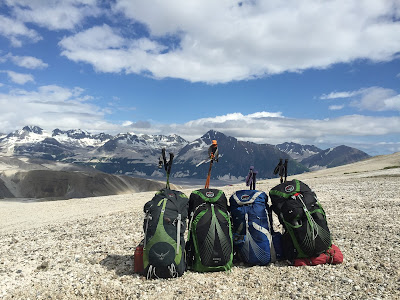While I was in Kodiak I was able to participate in the Alutiiq Museum's Community Archaeology excavation as a volunteer. It was very exciting to show up and not be in charge. I got to dig, dig, dig, all day long, which is not something I often got to do when I was helping Patrick direct the excavations a few years ago. And guess what - when you move a lot of dirt you find a lot of stuff!
Quite literally, I found a very nice artifact on only my second trowel scrape of my first morning. At first glance it looked like a ground slate point, but upon further inspection I could see that it was not sharp, nor was it ever meant to be sharp - it was made to be blunt. Patrick suggested a "boot creaser" or something of the sort. I think that's a good explanation; the Alutiiq were certainly making a lot of clothing and other things from animal skins.
 |
| Blunt ground slate artifact - boot creaser?? (photo courtesy of Patrick) |
 |
| Huge and fancy ground slate point (not found by me!) |
 |
| Ground slate point with a groove down the middle (photo courtesy of Patrick) |
One of the more familiar aspects of digging at Community Archaeology was that it was HOT. We were all sweltering in our units, even though I was in thin pants and a t-shirt. It is always amazing that it can feel so unbearably warm when the official temperature is 62 degrees Farenheit, but I swear to you, the hottest I have ever been is while digging in Women's Bay. It's not like I've never been or worked in actual hot weather (I spent an entire summer working in CA where the temperature never dropped below 96 degrees during the day). I have no explanation except that the airport's weather station thermometer must be perpetually broken.






















































